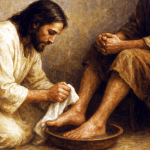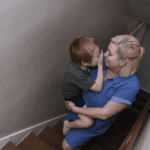![]()
The Anatomy of Peace Serialization Begins
By The Arbinger Institute
Editor’s note: The Anatomy of Peace, an important new book by the writers of Leadership and Self-Deception, shows us the cause of human conflict so that we can learn to live in peace. Today we begin with the preface. Look for the first installment of chapter 1 next Monday.

Typically we assume that people who are in conflict want solutions. And they do, of course. Parents of belligerent children want the belligerence to end. Those who work for tyrannical managers want an end to the tyranny. Citizens of weakened nations want to be treated with respect. And so on. People want solutions. But notice that the preferred solution in each case is that others change. Should we be surprised, then, when conflicts linger and problems remain?
What if in our conflicts with others there is something we want more than solutions? What if conflicts at home, conflicts at work, and conflicts in the world stem from the same root cause? And what if individually and collectively, we systematically misunderstand that cause and unwittingly perpetuate the very problems we think we are trying to solve? These are among the important questions explored in The Anatomy of Peace.
Through an intriguing story of parents struggling with their children and with problems that have come to consume their lives, we learn from once-bitter enemies the way to find peace whenever war is upon us. Yusuf al-Falah, an Arab, and Avi Rozen, a Jew, each lost his father at the hands of the other’s ethnic cousins. The Anatomy of Peace is the story of how they came together, how they help warring parents and children to come together, and how we too can find our way out of the struggles that weigh us down.
“But home, workplace, and world conflicts are entirely different issues,” you might say. “Few families and companies in the world do internal battle with artillery and tanks.”
True enough. But not all weapons are aimed at the flesh. Look around. Home and workplace casualties are everywhere. Bitterness, envy, indifference, resentment – these are hallmarks of the hot and cold wars that fester in the hearts of family members, neighbors, colleagues, and former friends the world over. If we can’t find the way to peace in these relationships, what hope have we for finding it between nations at war?
For those who have not read our prior book, Leadership and Self-Deception, The Anatomy of Peace stands on its own as a thought-provoking exploration of a body of ideas that points the way to peace in all of our interactions. Those who have read Leadership and Self-Deception know about the issue of self-deception (the problem of not knowing one has a problem) and how it affects all other problems. They will not be surprised, therefore, to encounter some of the same ideas in The Anatomy of Peace and to learn how those issues play a pivotal role in conflict situations at home, at work, and between countries throughout the world. They will also recognize one of the key characters from Leadership and Self-Deception, Lou Herbert, as The Anatomy of Peace takes the reader back in time to when Lou first learned the ideas that ultimately transformed his family life and his company.
While Leadership and Self-Deception focused on the workplace, The Anatomy of Peace explores the freeing and surprising implications of these ideas in all aspects of life. In addition, just as Leadership and Self-Deception explored how to solve self-deception in oneself, The Anatomy of Peace goes beyond and explores how to spread that solution among others.
Although some of the stories in this book were inspired by actual events, no character or organization described in this book represents any specific person or organization. In many respects, these characters are each of us. They share our strengths and our weaknesses, our aspiration and our despair. They are seeking solutions to problems that weigh us down. They are us, and we are them. So their lessons offer us hope.
Hope? Yes. Because our problems, as theirs, are not what they seem. This is at once our challenge and our opportunity.

















